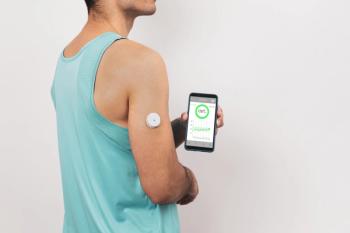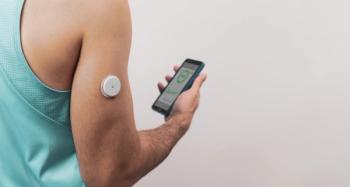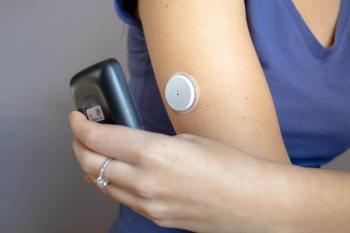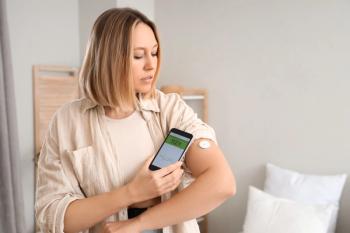
Patient Perceptions of Benefits, Barriers in Diabetes Technologies
Patients with type 1 diabetes who use technologies for glycemic management may perceive these devices as important for glucose monitoring and emotion well-being, but affordability remains a significant barrier.
Patients with type 1 diabetes (T1D) who have experience using advanced technologies for glycemic management view them as important for maintaining healthy glucose levels, lessening restrictions on daily activities, and improving quality of life, according to study results published in Diabetes Research and Clinical Practice.1
Technologies for managing diabetes include insulin pump therapy (IPT), real-time continuous glucose monitoring (RT-CGM), intermittently scanned CGM (isCGM), and devices that incorporate these into controlled automated insulin delivery systems. However, despite the commercial availability of these technologies, most adults with T1D have hemoglobin A1c levels higher than the American Diabetes Association recommendations.1,2
To better understand priorities and barriers in the use of these technologies, a team of researchers in Australia conducted a national survey “seeking the perspectives of others with T1D who use or have used technology to manage their glucose levels regarding their priorities for, and barriers to, accessing, selecting, understanding and optimal use of their diabetes technologies.”
The survey, which was co-designed by adults with T1D, included 3380 adults (mean 44.5 years; 61.9% women). Among patients who currently used a device, the majority (67.7%) used RT-CGM, followed by IPT (56.2%), and isCGM (30.5%). Patients with past device experience self-reported mostly isGCM use (34.3%), followed by RT-CGM (18.5%), and IPT (4.5%).
The majority of respondents noted that the technology was “important” or “extremely important” in maintaining a target range glycemic level (98.3%) and in decreasing the severity and frequency of hypoglycemia (92.7%).
Among participants with current or previous experience using devices, 70.8% of IPT users, 75.7% of RT-CGM users, and 58.0% of isCGM users reported that their device use made their wellbeing much better. When asked about affordability of devices, only 14.0% of IPT users, 11.5% of RT-CGM users, and 17.0% of isCGM users agreed that their devices were affordable.
“Our findings indicate that negative responses to device ‘affordability’ was associated with perceptions of higher device attributable emotional well-being for past users of IPT and RT-CGM, suggesting that financial limitations may be a major factor in discontinuing use of these technologies, rather than perceived deficiencies in the device and its support,” the authors noted.
When asked about the modality of learning how to use their devices, most participants noted that they preferred a face-to-face, self-paced online module training platform to obtain knowledge on device use. Diabetes nurse educators (87.1%), people living with diabetes who use the technology (64.0%), and endocrinologists (52.0%) were among the highest ranked by participants as individuals best suited for providing device training to patients.
Some study limitations included the lack of verification of self-reported device use due to privacy requirements, lack of differentiation between isCGM devices with and without alarms, and grouping all IPT devices together instead of separating devices by manufacturers or levels of automated insulin delivery. While the study was only conducted in Australia, respondents were proportionally represented across all states as well as in metropolitan and rural areas.
“Issues relating to access were prominent and while funding and implementation structures vary globally, the issue of equity in access is an important challenge which many countries need to address,” the authors said.
“In addition, a substantial proportion of respondents indicated dissatisfaction with education, training, and support. This will be of increasing relevance beyond Australia, particularly with increased uptake of these devices as they evolve and become more attractive to the consumer in conjunction with [glycemic] benefits,” the researchers concluded.
Disclosure: Some authors note conflicts of interest and receive industry compensation.
References
1. Read M, Henshaw KN, Zaharieva DP, et al. “Empowering us”: a community-led surgery of real-world perspectives of adults with type 1 diabetes using insulin pumps and continuous glucose monitoring to manage their glucose levels. Diabetes Res Clin Pract. 2023;202:110830. doi:101016/j.diabres.2023.110830
2. Foster NC, Beck RW, Miller KM, et al. State of type 1 diabetes management and outcomes from the T1D Exchange in 2016-2018. Diabetes Technol Ther. 2019;21(4):230. doi:10.1089/dia.2018.0384
Newsletter
Pharmacy practice is always changing. Stay ahead of the curve with the Drug Topics newsletter and get the latest drug information, industry trends, and patient care tips.











































































































































































































